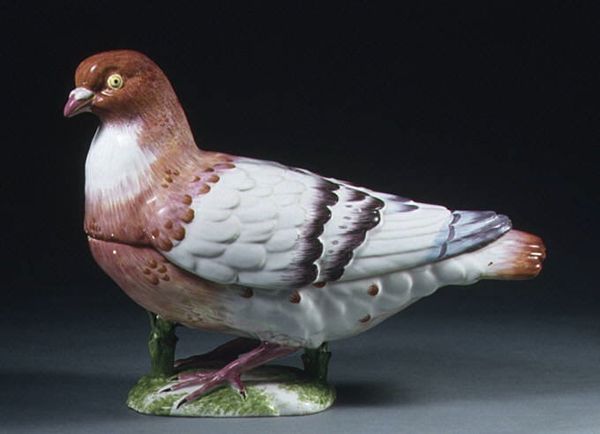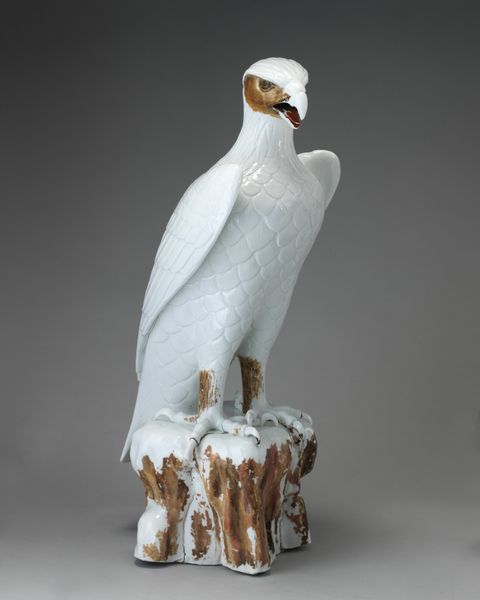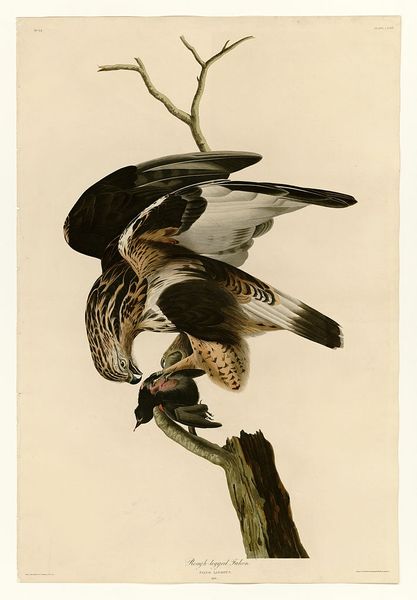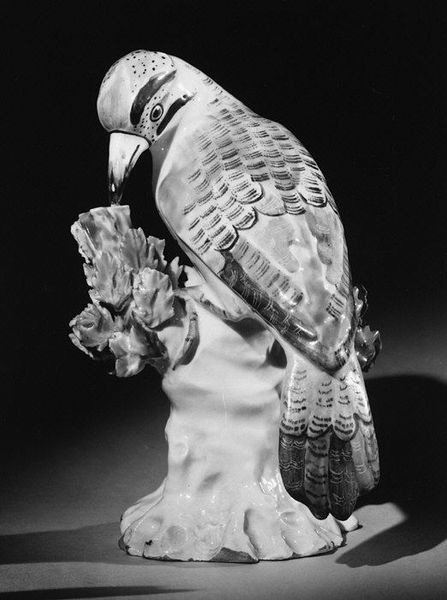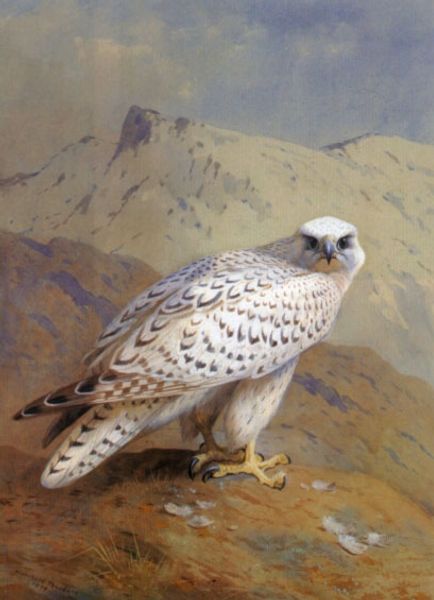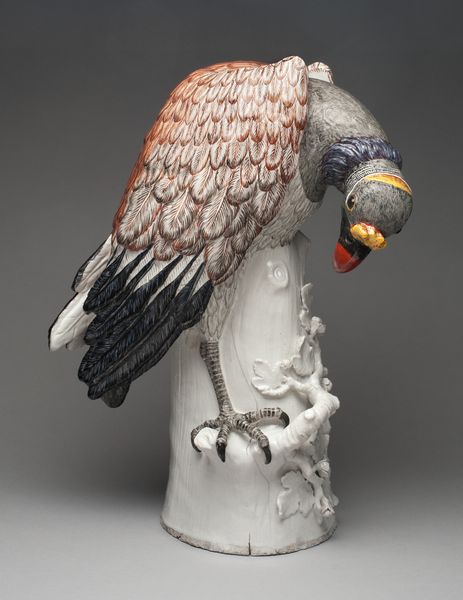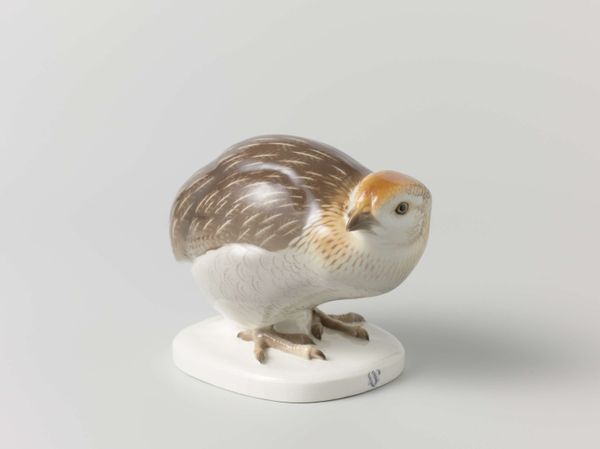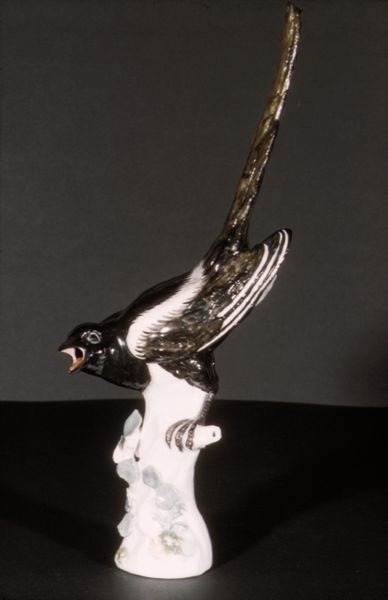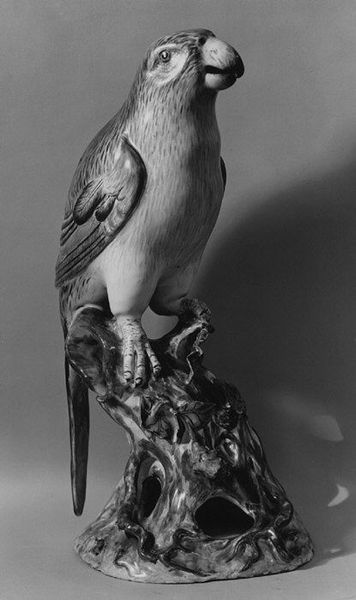
ceramic, porcelain, sculpture
#
baroque
#
sculpture
#
ceramic
#
porcelain
#
figuration
#
sculpture
#
decorative-art
Dimensions: Height: 5 3/4 in. (14.6 cm)
Copyright: Public Domain
Editor: This is "Nesting Pigeon," a porcelain sculpture from around 1732, made by the Meissen Manufactory. It strikes me as remarkably detailed, especially considering it's porcelain. What draws your attention to this piece? Curator: It is tempting to view the bird alone, and certainly pigeons carry a rather complex semiotic weight— historically symbols of peace, fidelity, and even divine presence. But let's consider it nestled. The nest, as a constructed architecture and as a powerful metaphor. What comes to mind? Editor: Well, I immediately think about the obvious connection to motherhood, but I wonder if there's something deeper? Curator: Motherhood certainly, but what other meanings has the "nest" accrued over centuries? What feelings might a finely crafted nest evoke for an 18th-century viewer, steeped in baroque sensibilities and increasingly concerned with domesticity? Consider that Meissen porcelain was, itself, an extravagant, constructed object, carefully "nested" within wealthy homes. Editor: So, it’s less about just the literal depiction of a bird and more about this idea of home, family, and perhaps even luxury within a changing society? Curator: Precisely! And think, too, of the whiteness of the porcelain. Purity? Wealth? Consider the complex coding of color, absence of color, and the symbolic value of the natural world recreated artificially within aristocratic settings. Editor: That’s fascinating; I hadn’t considered the nest as such a layered symbol, or the whiteness as communicating a distinct message to the elites who were the original consumers of such material. Curator: These objects acted as conversation pieces, mediating complex social ideas and personal values through shared symbols. And what a durable, strange, alchemical transformation: Earth into porcelain! How might we nest *that* idea within our understanding of the sculpture's symbolic work? Editor: This makes me want to rethink what "naturalism" even means in decorative art! Thank you!
Comments
No comments
Be the first to comment and join the conversation on the ultimate creative platform.
